How to choose the right portable air conditioner for your home – size, power and noise explained
This is everything you need to make the right decision
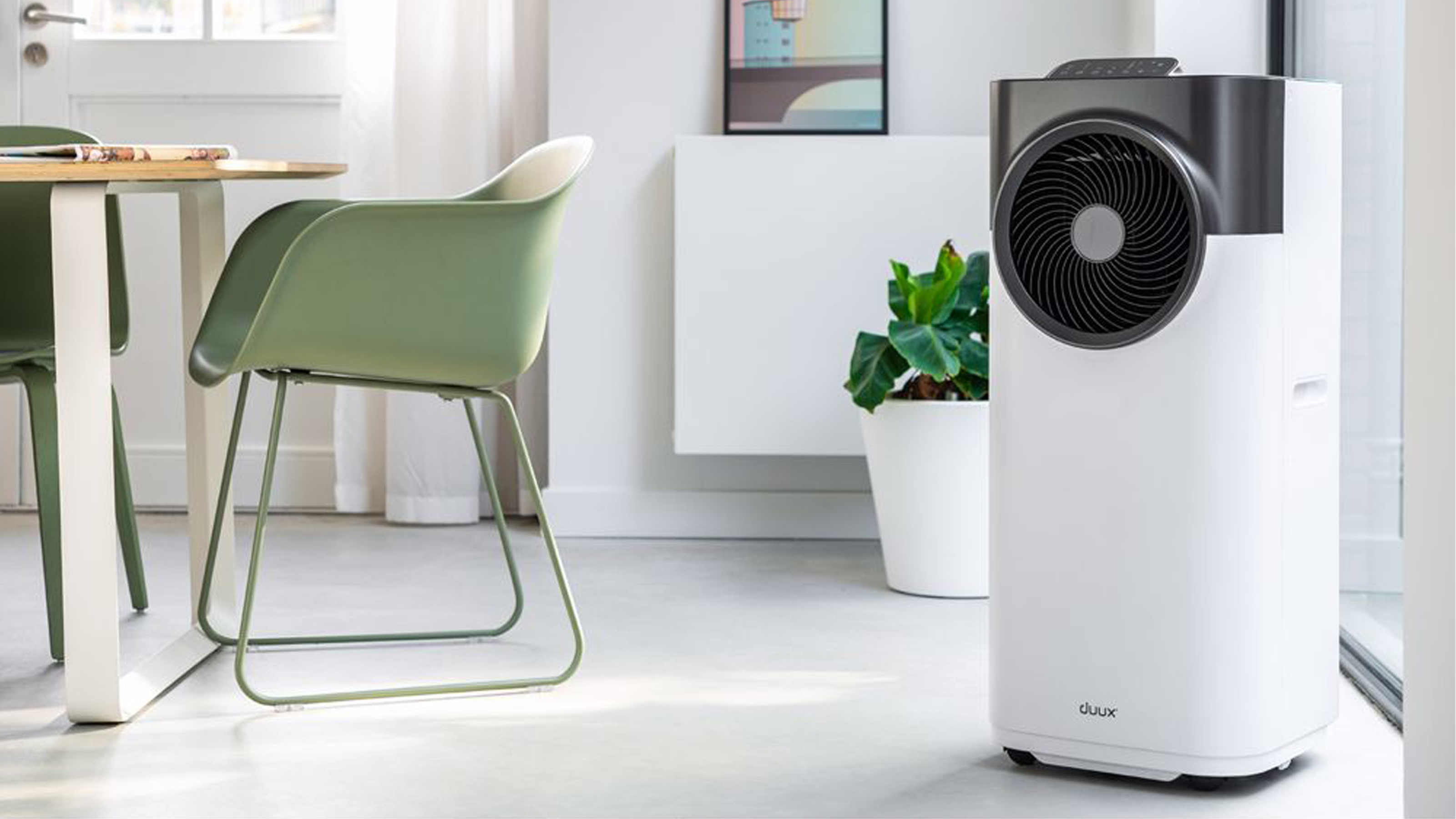

When the next UK heatwave hits, a portable air conditioner can feel like an absolute lifesaver, especially if your home tends to trap heat upstairs, when you're trying to sleep or work.
However, the best portable air conditioners don't come cheap, so this is an investment purchase where it pays to have a little know-how under your belt before you shop.
With so many designs promising powerful cooling, whisper-quiet operation and energy efficiency, knowing which one to choose can be tricky.
So, from BTU ratings and room size to noise levels and running costs, I've rounded up the key features to look out for when sourcing the best portable air conditioner for your home.
1. BTU (British Thermal Units)
The first thing you'll want to consider when choosing the best portable air conditioner for your home is BTU.
BTU stands for British Thermal Unit and describes how many units of heat an air conditioning unit can suck out of the air per hour to cool down an indoor space.
Portable air conditioners tend to start from 5000 BTU and can go up to a substantial 23000 BTU. The higher the BTU, the larger the space that the air con unit will be able to cool and the quicker it will do so.
Sign up to our newsletter for style inspiration, real homes, project and garden advice and shopping know-how
However, a higher BTU also means a higher price tag, and likely higher running costs, so it's a balancing act of investing as much as you can for better performance against how much you're willing to pay upfront for a unit.
2. Room size
As mentioned, BTU is also linked to the size of the space that an air conditioner can keep cool, which is one of the things I wish I'd known about before buying one. Most manufacturers will give a recommended room size in the air-con unit's specifications, generally somewhere from 8m2 to 100m2+, so make sure to check that the unit you buy is powerful enough to cope with your indoor space.
It's generally recommended to close doors and windows in the room that you're trying to keep cool, so if you only want to keep a small bedroom cool, then you can opt for a cheaper, lower BTU unit; however, an open plan space will require a much more powerful appliance with a larger BTU.
As such, it's also worth being aware of the worst places to put an air conditioner so you can ensure your unit is operating in the best possible way per its location.
3. Portability
You're likely opting for a portable air con unit because you would like it to be – well, portable! However, in reality, even the best portable air conditioners are both bulky and heavy, weighing from 20kgs for a smaller 'lightweight' air conditioner to 30kgs+ for more powerful units.
Check that your preferred unit comes with built-in wheels to help you manoeuvre it within the home, but bear in mind that if you want to carry a unit up and down the stairs, then you're probably going to need two people to do that safely.
If you know you'll struggle with a cooling device of that weight, an air cooler could be a lighter option, although it won't deliver the same cold air that an air conditioner can. You can read up on the pros and cons of the two cooling devices in our detailed air conditioner vs air cooler explainer.
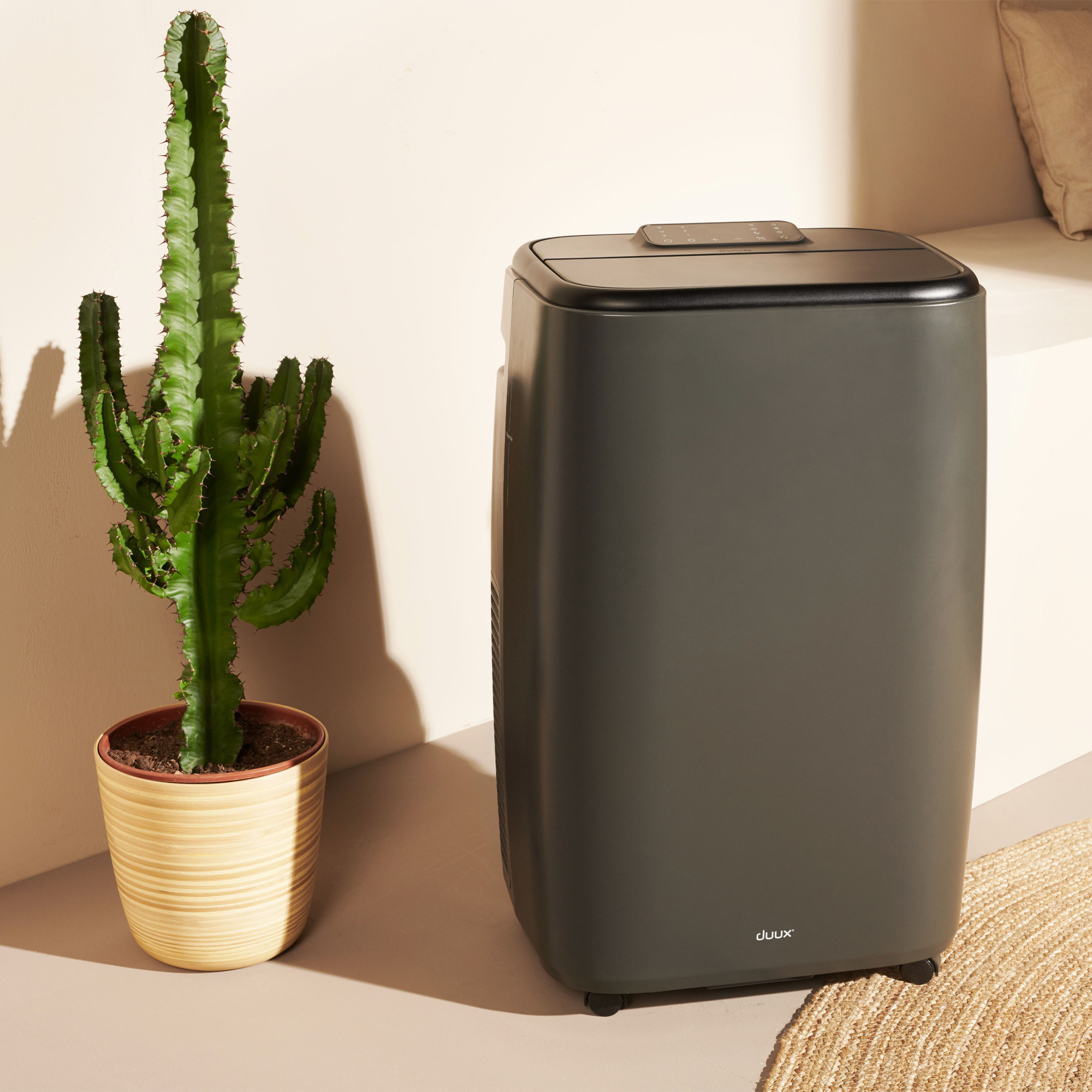
4. Noise levels
The biggest bugbear with portable air conditioners – and the most common gripe found in online reviews across the board – is their noise levels.
A portable air conditioning unit uses both a fan and a compressor to cool the air, and that's a noisy process, meaning you're likely to have to turn the TV up quite a few notches if you have one running in a living space. And, if you're a light sleeper, then you may struggle to sleep whilst the air conditioning unit is running.
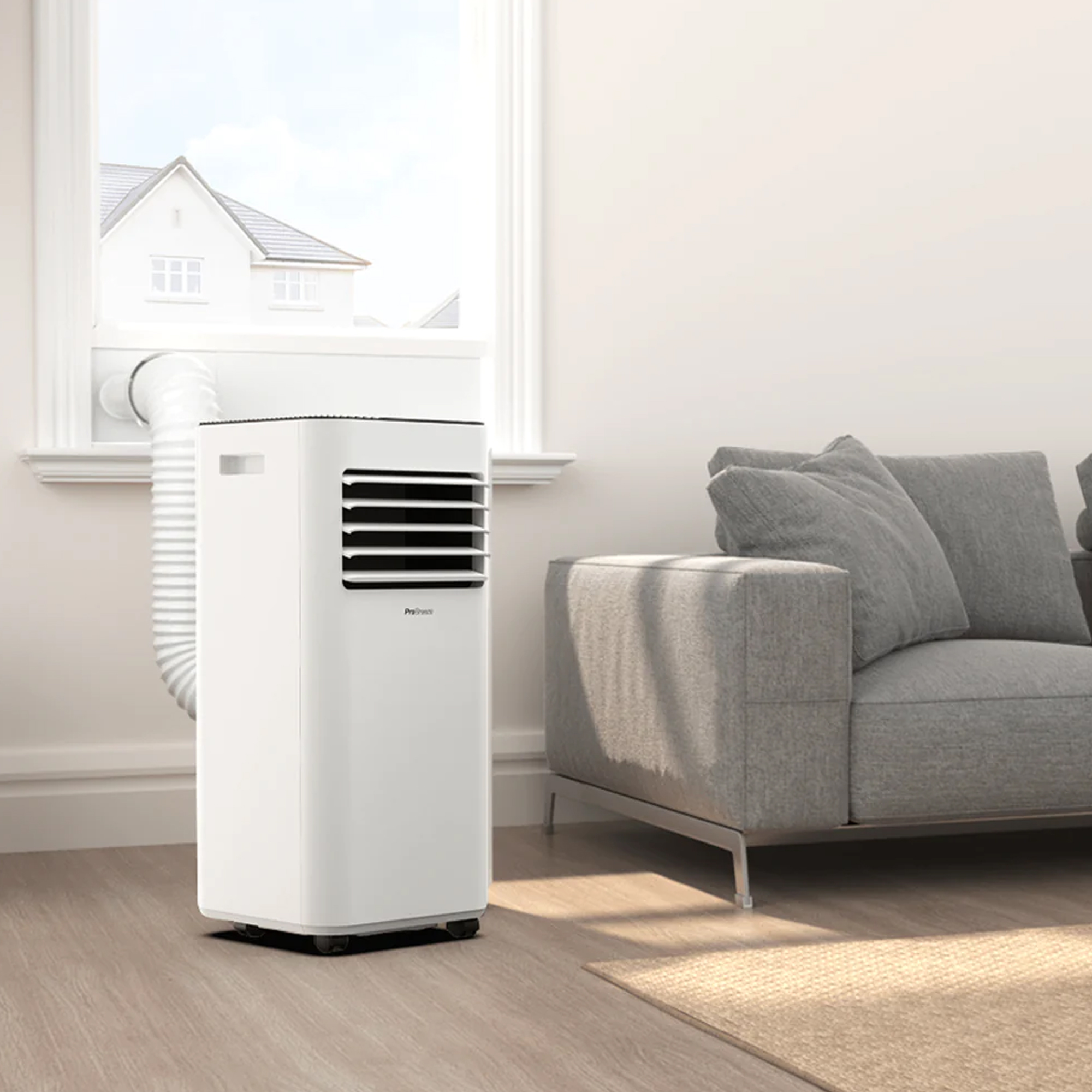
I found the best bet is to run the air con unit in a bedroom for a few hours before you want to go to sleep, and then turn it off once you turn in for the night.
If you're sensitive to noise, then make sure to check the manufacturer's stated decibel level (measured in dB) before you buy. Most will be around the 50dB mark, with some models offering quieter functionality of 40dB and others clocking in around 60dB.
However, in our testing process, our testers found that there's noise and then there's noise. We tested several portable air conditioners where the noise they emitted resembled the sound of a train engine chugging – a noisy, mechanical whirring noise that chopped and changed and soon drove us to distraction, making us want to switch the unit off as soon as we possibly could. Some of these were units with lower decibel ratings.
On the flipside, there were others, like the AEG Comfort 6000 Portable Air Conditioner, where, despite the higher decibel rating, the noise created was more like a steady stream of gushing air exiting the appliance. Because the noise is steady and never changing, it was more like having white noise playing in the background while you work or sleep. So once you got accustomed to it, it was actually pretty easy to ignore.
Largely, that means reading the reviews to see how other users have found the experience of having the air con unit you're considering in their own home.
5. Other functionality
Very often, an air con unit will come with additional functionality, usually a fan setting and a dehumidifier function. More expensive portable air conditioners sometimes also feature a heater function, which means you're more likely to be able to get year-round use out of your investment.
You might also want to consider whether you want your portable air conditioner to come with a timer, remote control, or WiFi connectivity.
A remote control is always a handy feature to have, especially if you're using the unit in the bedroom and don't want to have to get out of bed to adjust settings or turn the unit off.
Similarly, investing in a unit with a timer function gives you the ability to programme the unit to turn off a few hours after you've got into bed, or to turn on during the hottest part of the day to keep the house cool for pets, or reduce the temperature before you get home from work. A unit with Smart functionality can also offer the means to control the unit when you're away from home.
6. Window kit

For an air con unit to really do its job, it needs to be operated within a sealed room and vented out of an open window via an exhaust hose to dispel the heat. For this reason, the best portable air conditioners come with window sealing kits, but not all do, so it's worth checking that one is included before you buy.
A window kit can be a bit of a faff to install the first time – especially as very few windows are a uniform size, so a generic kit can sometimes fall short – but once installed, you can leave it in place for subsequent use.
FAQs
Are portable air conditioners expensive to run?
As an electrical appliance, portable air conditioners will cost money to run, with larger and more powerful units (that means a higher BTU) generally using more energy than smaller units. On average, they cost around 20p to 30p per hour to operate. This means that running one for eight hours a day can add roughly £50 - £75 to your monthly electricity bill.
That said, it's important to buy the best portable air conditioner for your room size; otherwise, your unit will be working overtime to try and cool a too-large space and subsequently increase the cost of running a portable air conditioner. Running costs can be reduced by choosing the right size for your space, using timers or sleep modes, keeping filters clean and maintaining good ventilation.
Most portable air conditioning units come with an energy rating stated on their energy label to help you compare how many kW per hour the unit will use.
Do you need to vent a portable air conditioner?
Yes, a portable air conditioning unit will need to be vented out of a window in order to dispel the warm air that the unit has sucked from the room.
Technically, you could just stick the portable air conditioner's exhaust hose out of the window to do this, but this will mean you're letting hot outside air back inside the room. That means the air conditioner will be working very hard to cool the room, and it isn't energy efficient or economical.
A window sealing kit aims to prevent this situation by forming a seal around the opened window, and through that, you can poke the exhaust hose. The air conditioner can then draw hot air from the room into the body of the unit, cool it via refrigerant, blow the cooled air back into the room, and vent the extracted heat out to the outside world.
A window sealing kit is often provided with the best portable air conditioners, but not always, so it's worth checking the small print before you buy.
If you do need to purchase one separately, then there's a wide variety of window sealing kits available. Finding the right one for you will be dictated by the type of window you're venting the exhaust hose from. There's a wide selection of Air Conditioner Window Seal Kits on Amazon, including plastic or metal 'sliding plate' designs, and fabric kits that attach via sticky Velcro strips to your window frame and casement. The type that's best for you will be determined by your window's size, opening mechanism, and hinging placement.
Is a portable air con unit better than a fan?
Even though they don't actively cool the air, a good fan can work surprisingly well at cooling you down on a hot day. That's because they circulate the air, and the breeze against your skin helps heat and stickiness to evaporate, therefore making you feel cooler.
However, when temperatures inside the home really soar, even the best fan may not be able to cut it, and instead, a portable air conditioning unit will offer far superior cooling powers.
An air conditioner uses a fan to draw hot air from the room into the body of the unit, then cools it via a compressor and refrigerant, and blows the cooled air back out into the room. The extracted heat is vented through the exhaust hose out of a window to the outside world.
This dramatically reduces the room's temperature. In our tests, we found that the best portable air conditioners, used in a well-sealed room, could reduce the temperature by up to 10 degrees in under an hour.
So, to settle the portable air conditioner vs fan debate, whilst the best fans definitely work to cool a person thanks to the breeze they create, that does a surprisingly good job of cooling the skin, only an air conditioner can dramatically lower the temperature of an entire room or living space. And only an air conditioner will deliver that fridge-like cold air we all crave in a heatwave.
Shop portable air conditioners
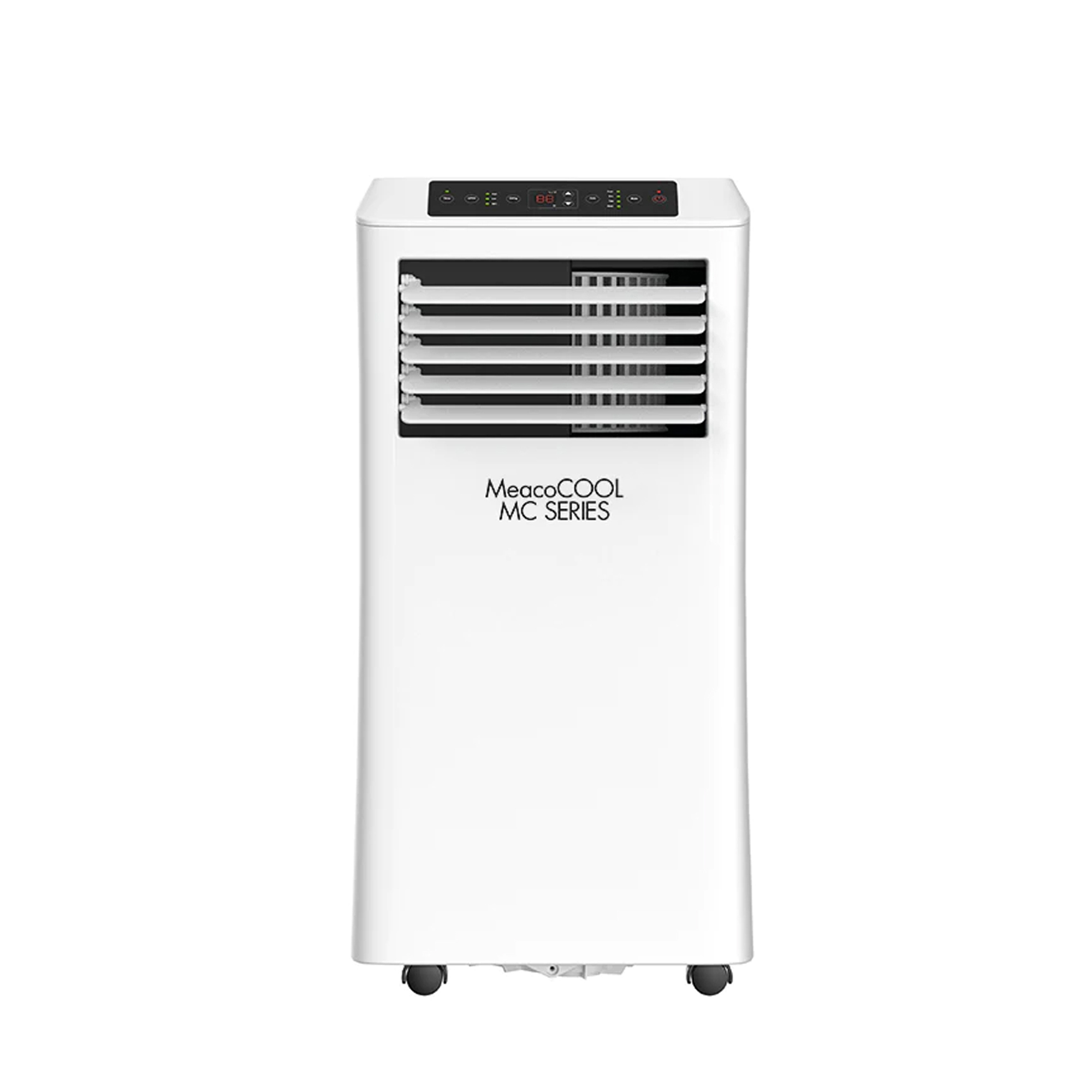
Affordable, lightweight and compact, energy efficient and easy to use, there's a lot to love about the MeacoCool MS Series portable air conditioner.
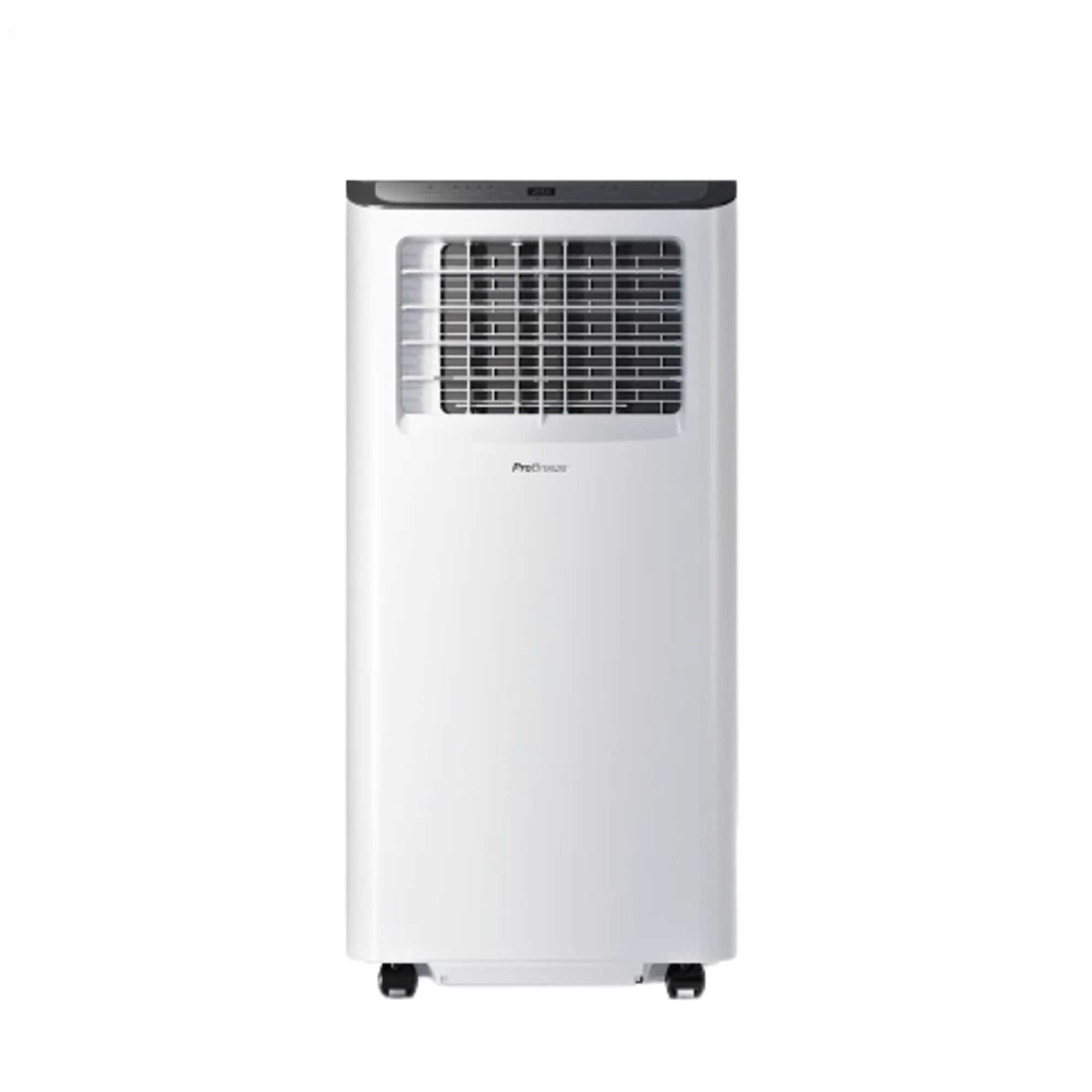
This Pro Breeze model is one of the very best budget portable air conditioners for its 9000 BTU. It's a tad noisy and hefty, but it is effective at cooling down a room.
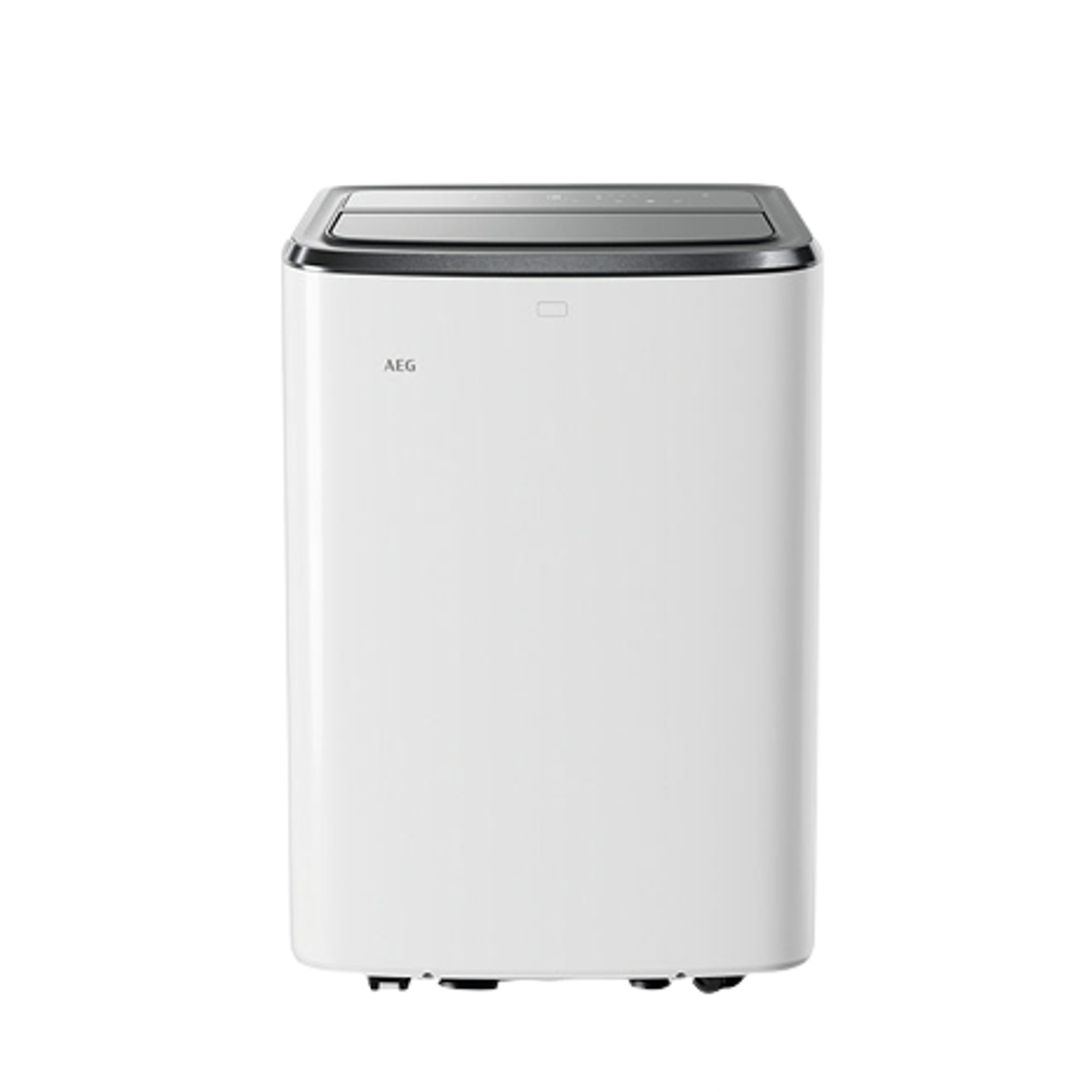
The AEG Comfort 6000 is a powerful 3400-watt portable air conditioner that's easy to use, relatively quiet, has WiFi connectivity, and can cool down a room fast.
Choosing the best portable air conditioner ultimately comes down to matching the unit to your space, lifestyle and budget. Think about where you'll use it most, how often you'll move it between rooms and whether you'd benefit from extra features like a smart app control.
Once you've narrowed it down, check the BTU rating and energy efficiency to make sure it'll cool effectively. Getting the right model will help you breeze through hot spells in comfort.

Jenny is Senior Digital Editor and joined the team in 2021, working across Ideal Home, Real Homes, Homes & Gardens, Livingetc and Gardeningetc. Since getting on the property ladder, her passion for interior design and gardening has taken on a new lease of life. She loves collecting and salvaging unique items (much to her other half's despair) but sniffing out stylish home bargains is her one true love.
You must confirm your public display name before commenting
Please logout and then login again, you will then be prompted to enter your display name.